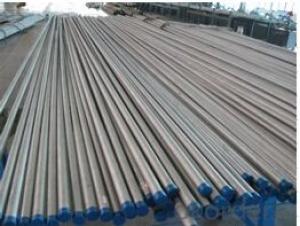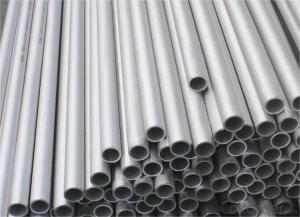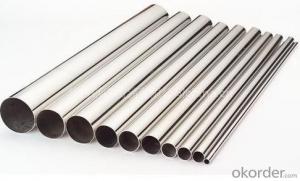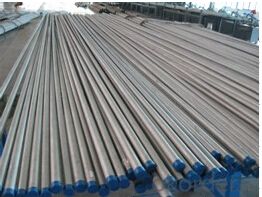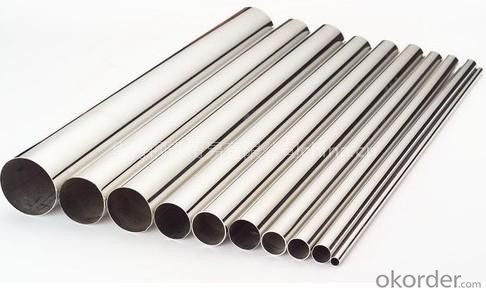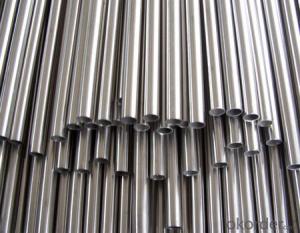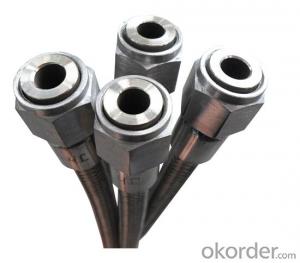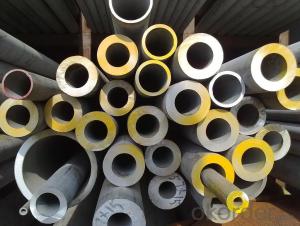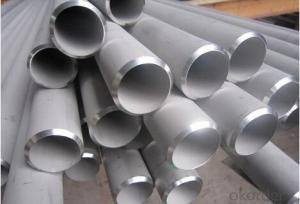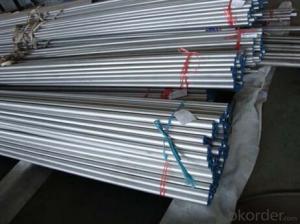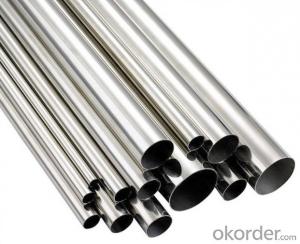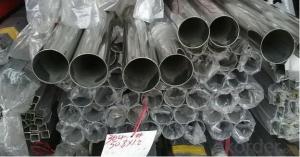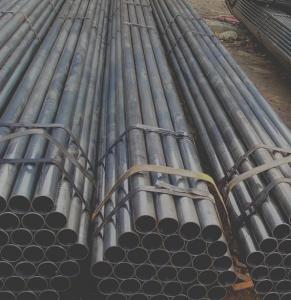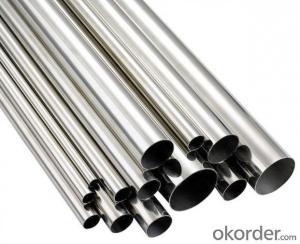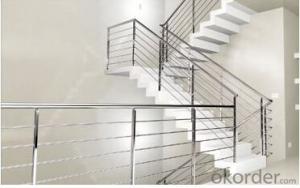Heat Exchanger Stainless Steel Pipe TP316 ASTM A213
- Loading Port:
- Ningbo
- Payment Terms:
- TT OR LC
- Min Order Qty:
- 1 m.t.
- Supply Capability:
- 5000 m.t./month
OKorder Service Pledge
OKorder Financial Service
You Might Also Like
1、Structure of Heat Exchanger Stainless Steel Pipe TP316 ASTM A213 Description:
Stainless Steel are corrosion resistant and can be built to meet various industrial, pharmaceutical, food, dairy, and beverage requirements. Other material and alloys including (Hastelloy, AL-6XN), titanium, copper-nickel alloys, copper, steel, carbon steel and brass are also available.
2、Main Features of Heat Exchanger Stainless Steel Pipe TP316 ASTM A213:
• High manufacturing accuracy
• High strength
• Small inertia resistance
• Strong heat dissipation ability
• Good visual effect
•Reasonable price
3、Heat Exchanger Stainless Steel Pipe TP316 ASTM A213 Images:
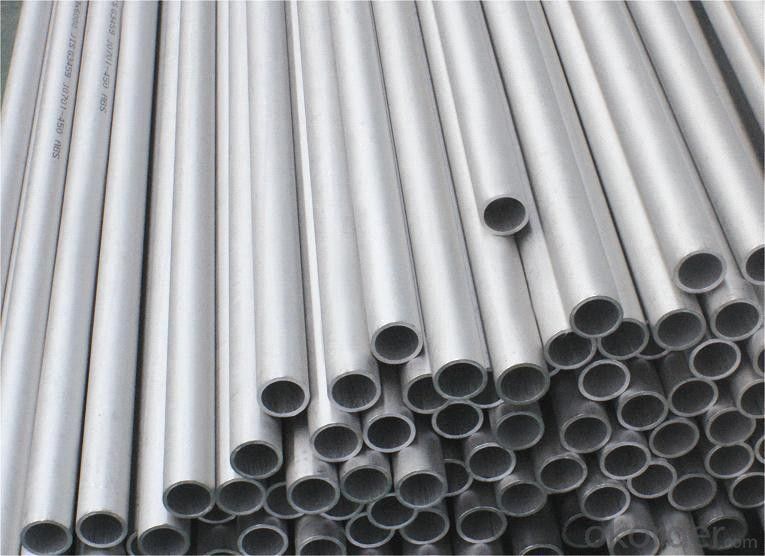
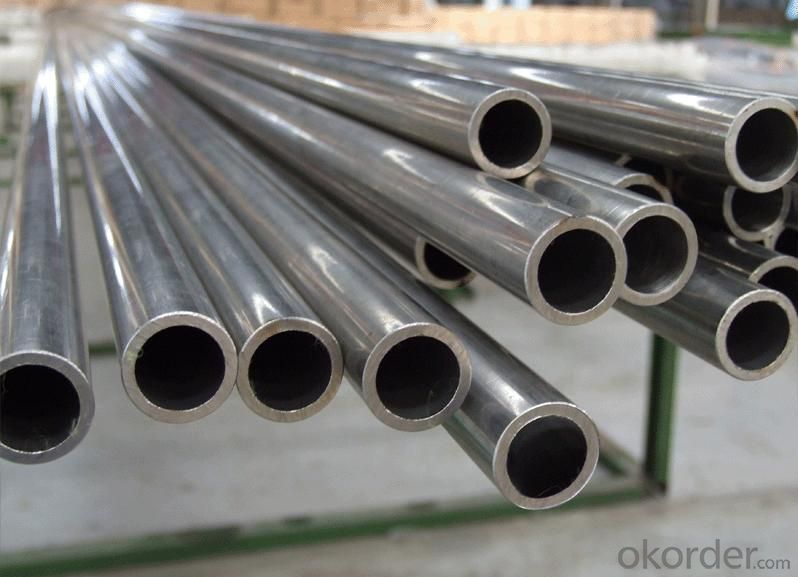
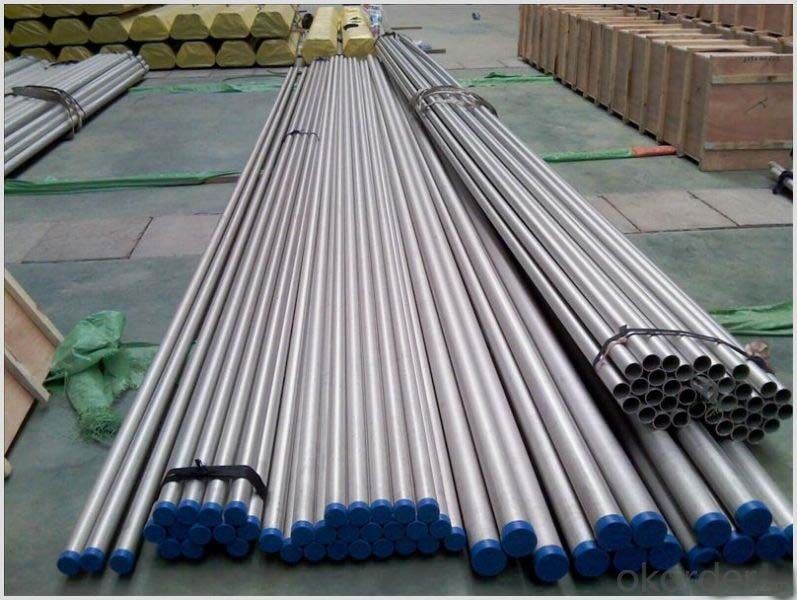
4、Heat Exchanger Stainless Steel Pipe TP316 ASTM A213 Specification:
| Welded Stainless Steel Tube | |
| Material Grade | 304,304L,316 ,316L,321,310S,2205,904and so on. |
| Standard | ASTM A312, A554, A249, A269 and A270,ect |
| DIN 17456-85 , DIN 17458-85, DIN 17459-92,ect | |
| JIS G3446-1994, JIS G3448-1997, JIS G3459-1997, JIS G3463-1994,ect | |
| GB13296-1991, GB14975-2002, GB14976-2002,ect | |
| Outer Diameter | 13.7-2020mm |
| Thickness | 0.5-50mm |
| Length | 1m -12m or as customers' request |
| Polish | 180G, 320G, 400G Satin / Hairline |
| 400G, 500G, 600G or 800G Mirror finish | |
| Test | eddy current inspection, ultrasonic inspection, X-ray inspection, real-time imaging, hydrostatic test, spectral analysis, intergranular corrosion, water pressure test, and mechanical property testing facilities. |
| Payment | 1) by L/C at sight, |
| 2) 30% deposit, 70% balance before Shipping. | |
| Delivery time | 7 days if this goods is stock goods. |
| 25 days if this goods will be produced after order | |
| Validity | Valid time is 3 days for price usually. |
| Payment terms | FOB QINGDAO |
| MOQ | 1 ton |
| Capacity | 1000 ton per month |
| Certificate | ISO, SGS, and third part inspection |
| Applications | the products are widely used in chemical industry, condenser pipe, heat exchanger, petroleum, shipping military, environment protection, high temperature resistant, low temperature resistant, corrosion resistant and so on. |
| packing details | 1) Wooden-box Package 2) The Wooden Frame Packing. 3) Intertexture Cloth Packaging with the Iron Sheet Bonding and the Two Terminals Covered With Plastic Dome. |
5、FAQ of Heat Exchanger Stainless Steel Pipe TP316 ASTM A213:
①How is the quality of your products?
Our products are manufactured strictly according to national and internaional standard, and we take a test on every pipe before delivered out. If you want see our quality certifications and all kinds of testing report, please just ask us for it.
Guaranteed: If products’ quality don’t accord to discription as we give or the promise before you place order, we promise 100% refund.
②How about price?
Yes, we are factory and be able to give you lowest price below market one, and we have a policy that “ for saving time and absolutely honest business attitude, we quote as lowest as possible for any customer, and discount can be given according to quantity”,if you like bargain and factory price is not low enough as you think, just don’t waste your time.Please trust the quotation we would give you, it is professional one.
③Why should you chose us?
Chose happens because of quality, then price, We can give you both.Additionally, we can also offer professional products inquiry, products knowledge train(for agents), smooth goods delivery, exellent customer solution proposals.Our service formula: good quality+good price+good service=customer’s trust
SGS test is available, customer inspection before shipping is welcome, third party inspection is no problem.
Any question, pls feel free to contact us !
- Q: Can stainless steel pipes be used for HVAC systems?
- Yes, stainless steel pipes can be used for HVAC (Heating, Ventilation, and Air Conditioning) systems. Stainless steel is a widely used material in HVAC applications due to its durability, corrosion resistance, and high heat resistance. Stainless steel pipes are able to withstand high temperatures and pressures, making them suitable for both heating and cooling systems. Additionally, stainless steel pipes do not rust or corrode easily, which ensures a longer lifespan and minimal maintenance requirements for HVAC systems. The smooth interior surface of stainless steel pipes also allows for better airflow, which improves the efficiency of the HVAC system. Overall, stainless steel pipes are a reliable and efficient choice for HVAC installations.
- Q: Can stainless steel pipes be heat treated?
- Yes, stainless steel pipes can be heat treated. Heat treatment processes such as annealing, solution annealing, and stress relieving can be applied to stainless steel pipes to improve their mechanical properties, such as strength, hardness, and corrosion resistance.
- Q: Can stainless steel pipes be used for drinking water systems?
- Yes, stainless steel pipes can be used for drinking water systems. Stainless steel is a safe and hygienic material that is resistant to corrosion, rust, and scaling. It does not release harmful substances into the water and is approved by regulatory bodies for use in drinking water applications.
- Q: Stainless steel seamless steel tube, ordinary seamless steel pipe, which is good?
- Stainless steel pipe in the nickel element is relatively high, nickel is pipe rust proof, wear-resistant, mainly corrosion-resistant. The strength of the steel pipe is generally related to the content of carbon in the pipe. The ordinary steel pipe is carbon steel pipe, and the compressive strength is generally better than that of the stainless steel tube.
- Q: What is the maximum temperature stainless steel pipes can withstand?
- The maximum temperature that stainless steel pipes can withstand depends on the specific grade of stainless steel used. Generally, stainless steel pipes can withstand high temperatures ranging from 1200°C to 1400°C (2200°F to 2550°F). However, it is important to note that the exact maximum temperature may vary based on factors such as the composition of the stainless steel, the duration of exposure to high temperatures, and the presence of any corrosive elements in the environment. It is always recommended to consult the manufacturer's specifications or a professional engineer for specific temperature limits for a particular grade of stainless steel pipe.
- Q: The difference between stainless steel pipe and stainless steel composite pipe
- Stainless steel composite pipe is made of stainless steel and carbon steel two kinds of metal materials with new materials nondestructive pressure synchronization into the compound, both stainless steel corrosion and excellent wear and beautiful appearance, good bending strength and impact resistance of carbon steel.
- Q: What is the difference between 2507 and 316 stainless steel pipes?
- The main difference between 2507 and 316 stainless steel pipes lies in their composition and properties. 2507 stainless steel is a super duplex stainless steel, which means it contains a higher content of chromium, nickel, and molybdenum compared to 316 stainless steel. This composition results in enhanced corrosion resistance, particularly in aggressive environments such as seawater or acidic solutions. The high chromium and molybdenum content also provide excellent resistance to pitting and crevice corrosion. On the other hand, 316 stainless steel is an austenitic stainless steel that contains lower amounts of chromium, nickel, and molybdenum compared to 2507. While it still offers good corrosion resistance, it is not as resistant to extreme conditions as 2507 stainless steel. In terms of mechanical properties, 2507 stainless steel has higher strength and toughness compared to 316 stainless steel. This makes it suitable for applications requiring high strength and resistance to stress corrosion cracking. In summary, the key differences between 2507 and 316 stainless steel pipes are their composition, corrosion resistance, and mechanical properties. 2507 stainless steel is a super duplex stainless steel with superior corrosion resistance and higher strength, while 316 stainless steel is an austenitic stainless steel with good corrosion resistance. The choice between the two will depend on the specific application and environment in which the pipes will be used.
- Q: What are the different types of stainless steel pipe insulation?
- There are several types of stainless steel pipe insulation available, including fiberglass, mineral wool, foam, and elastomeric foam. These materials provide different levels of thermal performance, durability, and resistance to moisture and chemicals, allowing users to choose the most suitable option for their specific needs.
- Q: Can stainless steel pipes be used for pharmaceutical applications?
- Yes, stainless steel pipes can be used for pharmaceutical applications. Stainless steel is a preferred material in the pharmaceutical industry due to its high corrosion resistance, durability, and easy maintenance. It is used for transporting and storing various pharmaceutical products, as it ensures hygiene, does not react with drugs or chemicals, and can withstand high temperatures and pressure. Additionally, stainless steel pipes can be easily cleaned and sterilized, making them suitable for pharmaceutical applications.
- Q: How do you clean stainless steel pipes?
- To clean stainless steel pipes, you can start by using a mixture of warm water and mild soap to scrub the surface of the pipes with a soft cloth or sponge. Make sure to rinse well and dry thoroughly to prevent water spots or streaks. For tougher stains or buildup, you can use a stainless steel cleaner or polish specifically designed for this purpose. Always remember to follow the manufacturer's instructions and test any cleaner on a small, inconspicuous area before applying it to the entire pipe.
Send your message to us
Heat Exchanger Stainless Steel Pipe TP316 ASTM A213
- Loading Port:
- Ningbo
- Payment Terms:
- TT OR LC
- Min Order Qty:
- 1 m.t.
- Supply Capability:
- 5000 m.t./month
OKorder Service Pledge
OKorder Financial Service
Similar products
Hot products
Hot Searches
Related keywords
